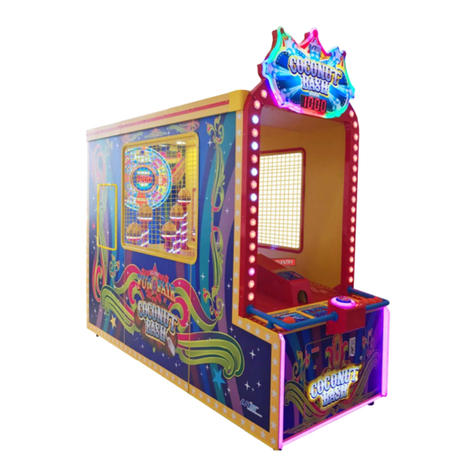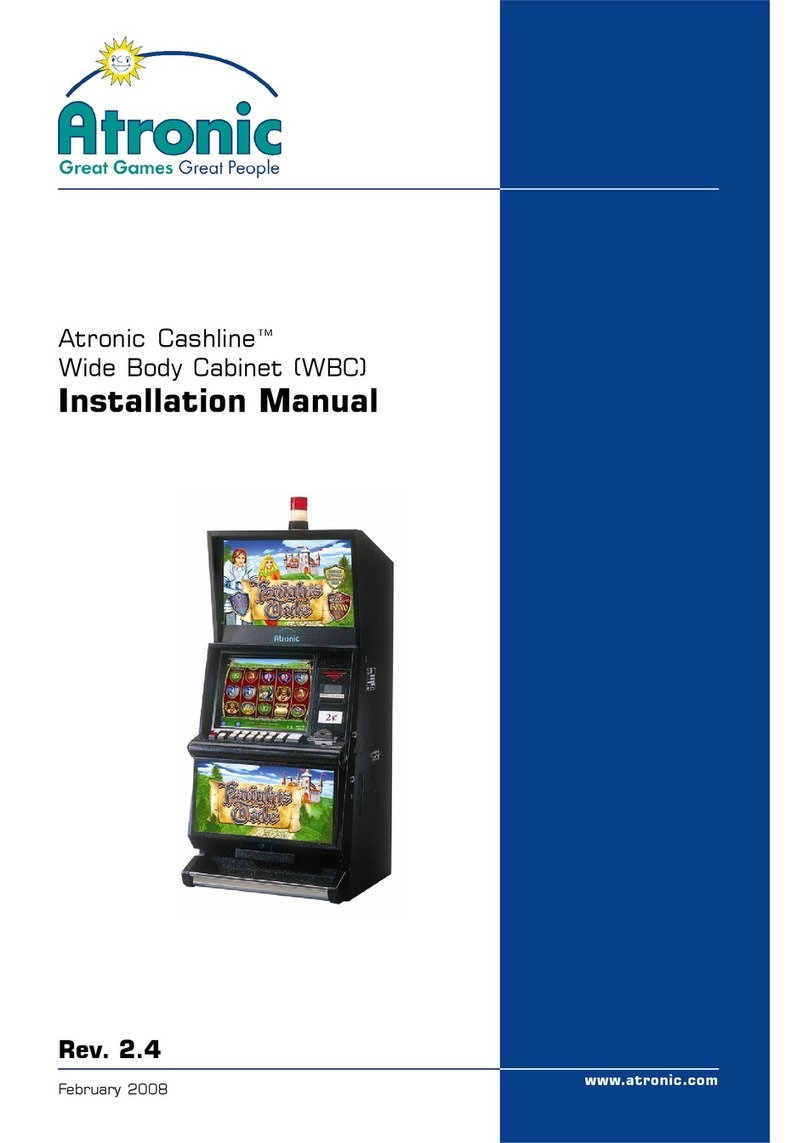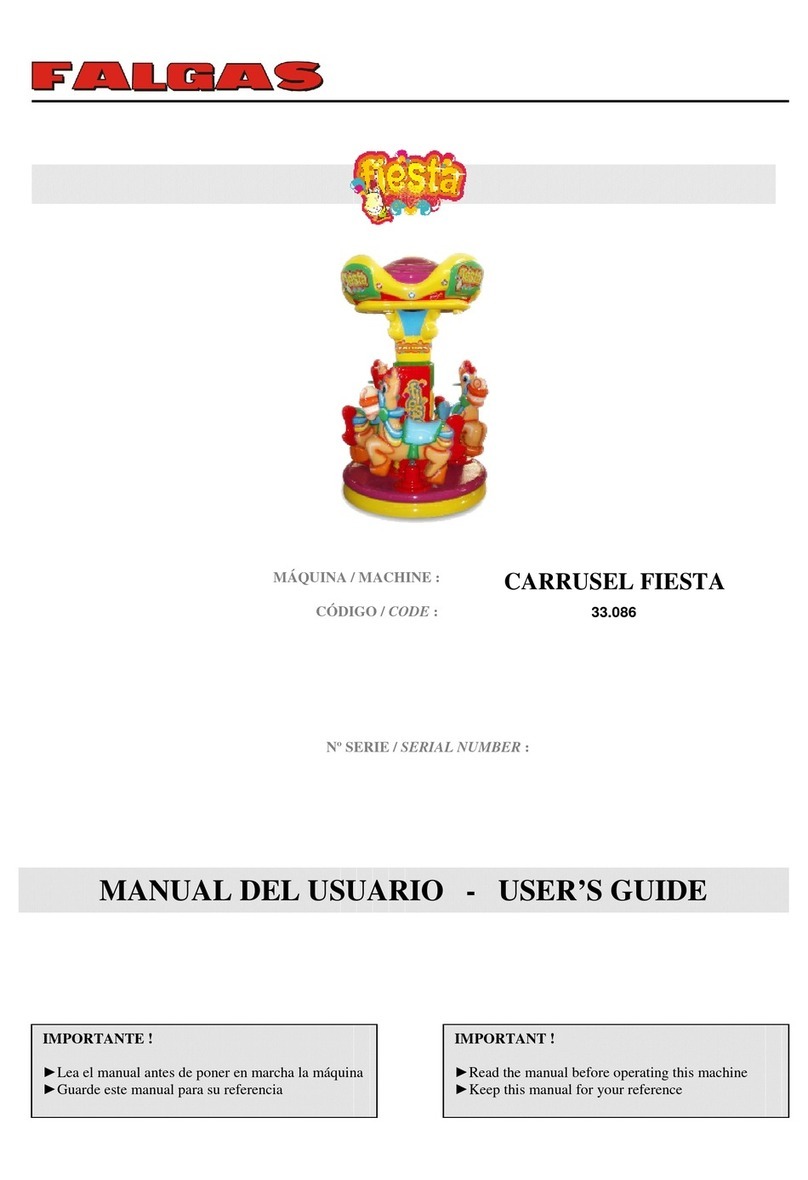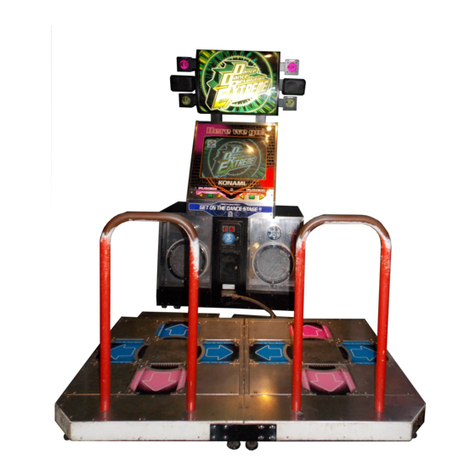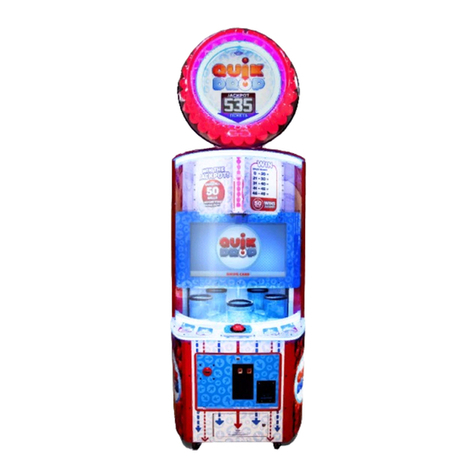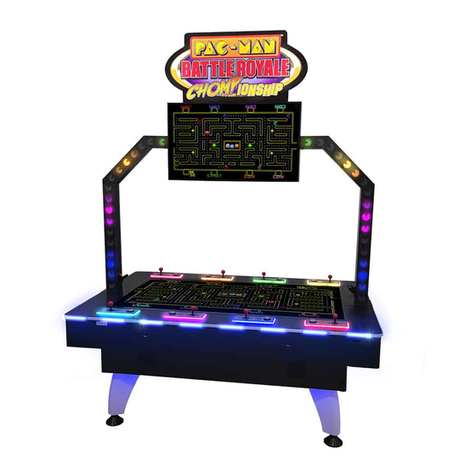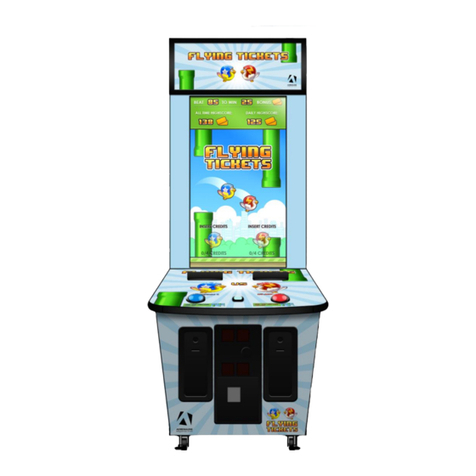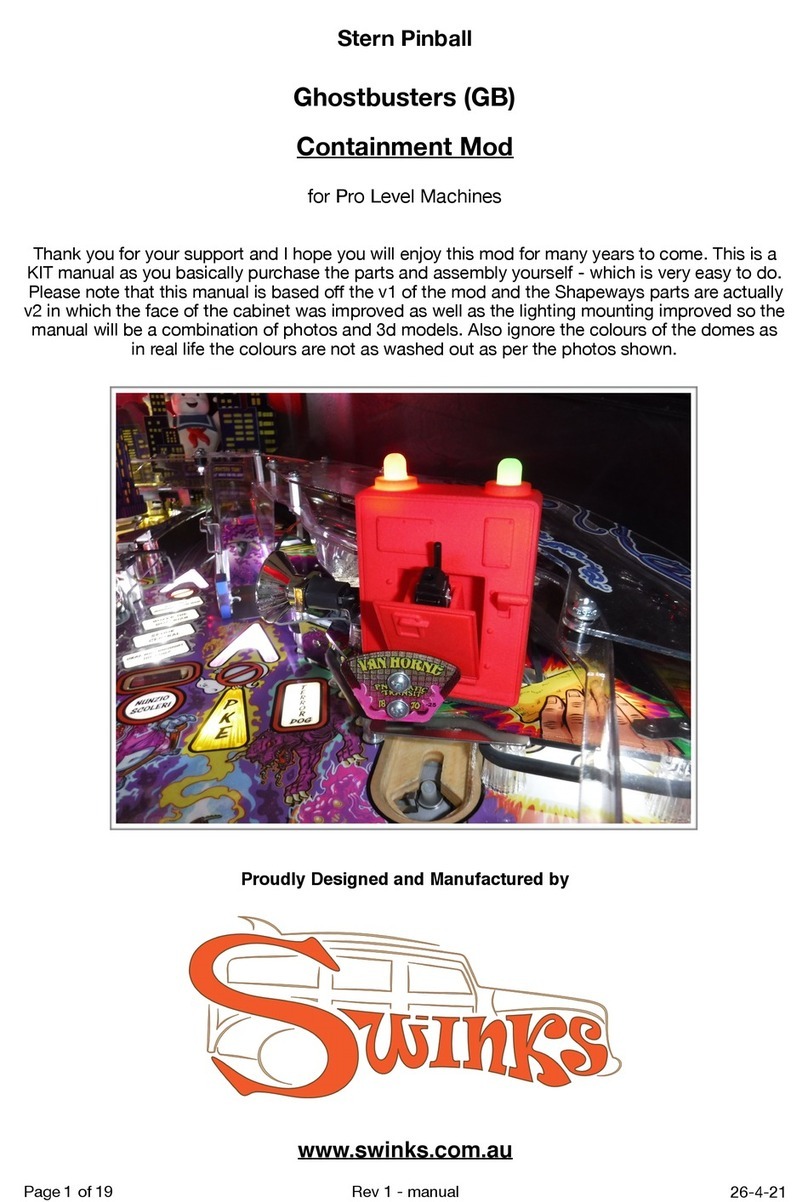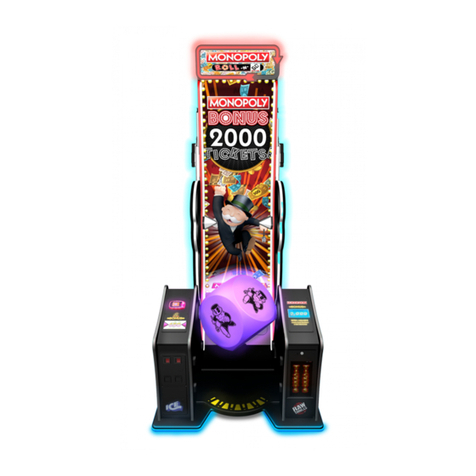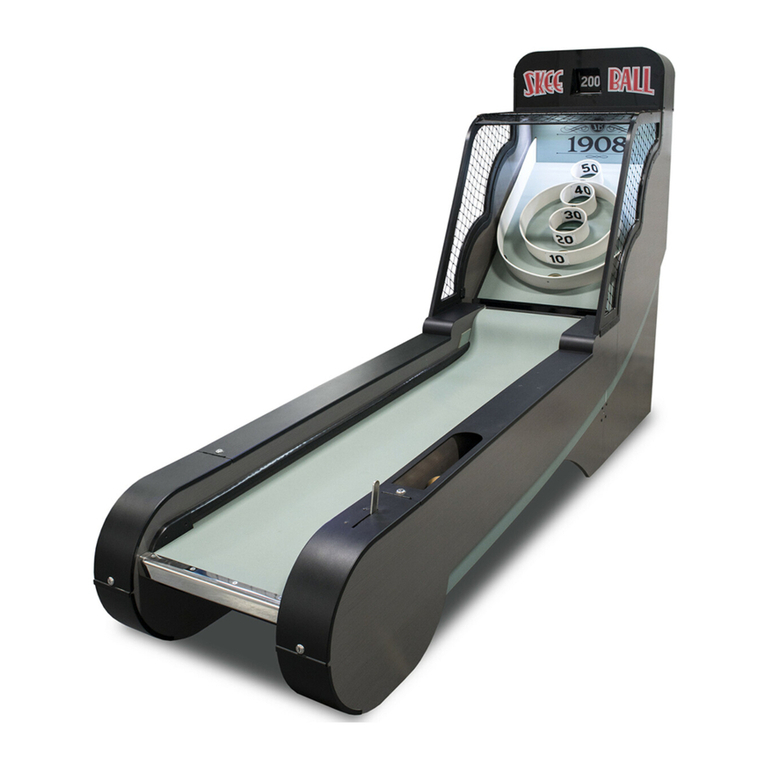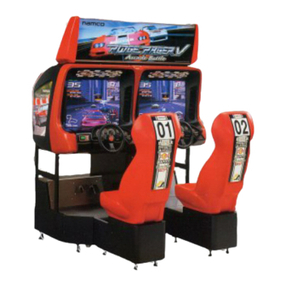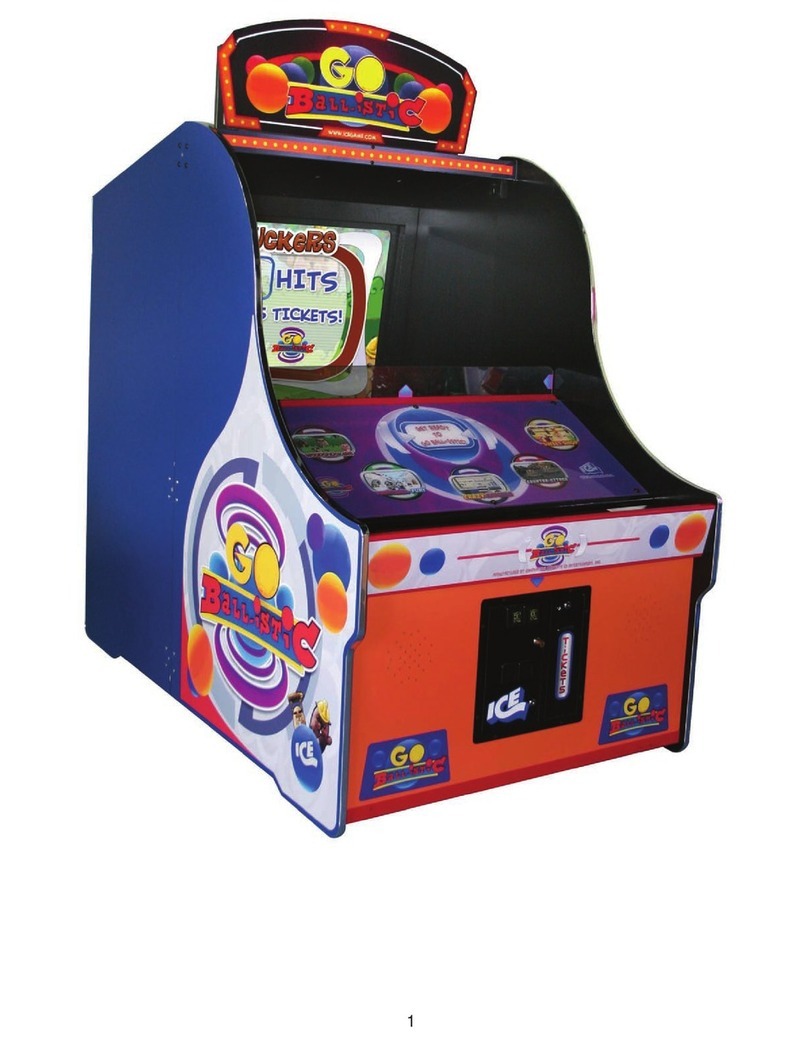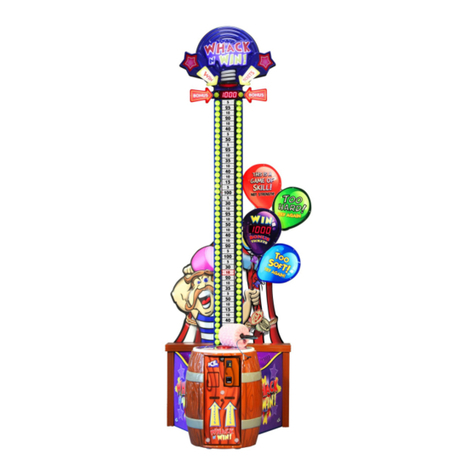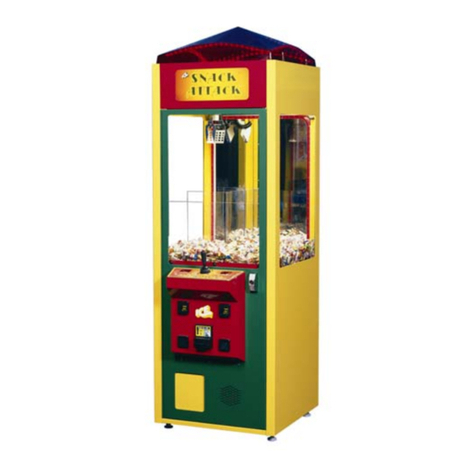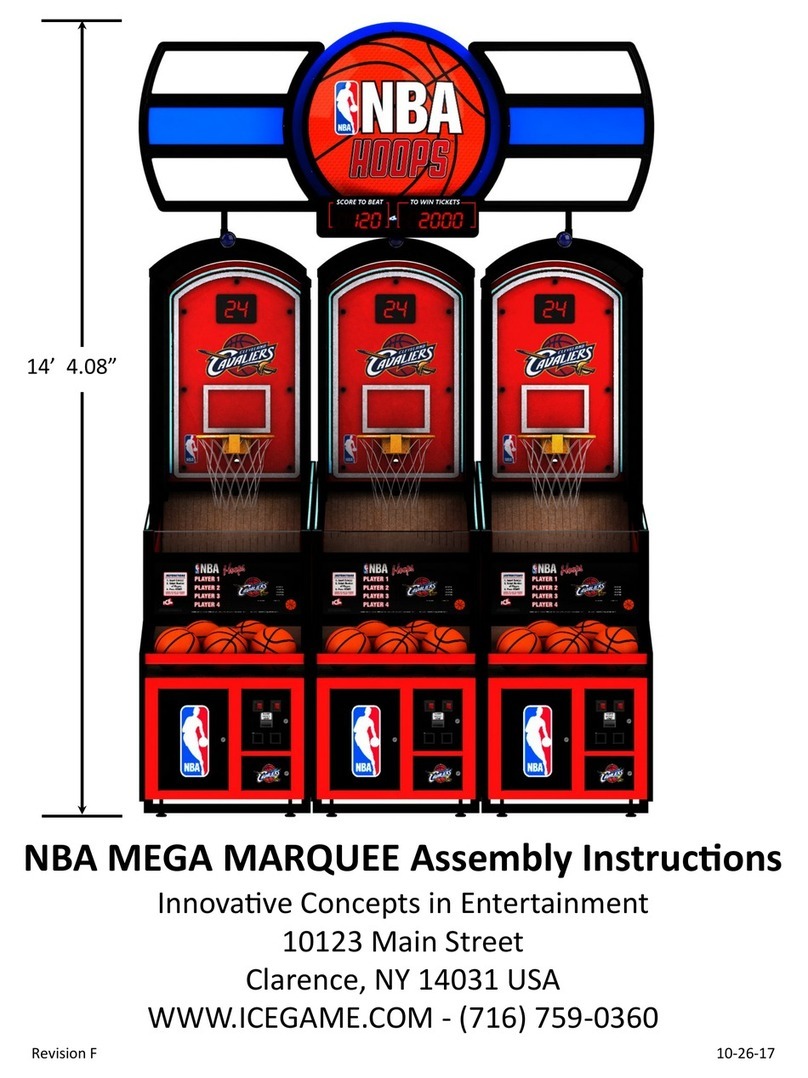
10
GAME REPAIR
OPERATIONAL
BACKGROUND
The KNOCK OUT PUNCH™ game has been de-
signed to be as easy as possible to repair.
The boxer belt can be easily adjusted while in the
game, yet can be removed easily from the game if
replacement should ever become necessary.
The punching mechanisms have been designed for
easy access by simply removing the access covers.
TROUBLESHOOTING PHILOSOPHY
To find problems with the game, always first check
what should be obvious. See that the game is
plugged in, and that all of the fuses on the game are
good. This includes the fuse that is located INSIDE
the power module.
Next, check to see that all of the connectors are
firmly seated and that none of the wires have been
pulled out of them.
When trying to find out if specific components are
bad or not, try swapping them with components from
another player station to see if the problem moves
with the component, or stays where it was. This will
help you to know if you have a problem with a spe-
cific component, or maybe a problem with either the
wiring or the Main P.C. Board.
Use extreme caution when using probes or voltme-
ters if the game is powered up. If doing continuity
checks, it is important to disconnect the harnessing
at both ends, as attached they may yield erroneous
results.
If a P.C. Board is suspected as the cause of a prob-
lem, check to see that all of the components on the
board are firmly attached. Pay special attention to
any socket device.
If light bulbs are suspected, swap them with one that
is known to work to narrow the problem down to ei-
ther a bulb or P.C. Board.
MECHANICAL REPAIR
PUNCHING GLOVE ASSEMBLY
OVERVIEW
The punching glove system is designed for high reli-
ability and safety. The assembly can be designed
with simplicity in mind, as the solenoid is driven for
maximum pull in strength.
The solenoid is driven by approximately 35 DC volts.
This voltage may be higher or lower depending on
your A.C. voltage at the wall.
The solenoid is fan cooled to allow for higher volt-
ages that will in turn provide the higher pull in
strength.
Since fan cooling is necessary under a high game
play mode, the solenoid is protected by a bi-metal
thermal switch that is strapped directly to the sole-
noid bobbin. This switch assures that if the fan fails,
the solenoid power will be shut down before the coil
could be damaged.
The thermal switch is run "IN LINE" with the solenoid
power. This simple arrangement is very reliable and
easy to troubleshoot.
TESTING THE COIL
TESTING FOR POWER - Disconnect the coil from
the connectors. Using a voltmeter, measure that
voltage is present during game play if the punch but-
ton is pressed. There should be a voltage of 30+
volts D.C. If you do not see this much voltage, but
do see some, your meter is probably too slow to see
the voltage, as it is only on for approximately 100
milliseconds. If you don't see any voltage at all, the
solenoid driver F.E.T. on the main P.C. Board could
be bad. It could also be that the push button is not
sending a signal to the main P.C. Board.
If you see voltage to the coil, but the mechanism
won't fire, check that the thermal switch is working
correctly. When the thermal switch is cool, discon-
nect the wires from its leads and do a continuity test
across the switch terminals. You should see continu-
ity. If you don't, the switch needs to be replaced.

